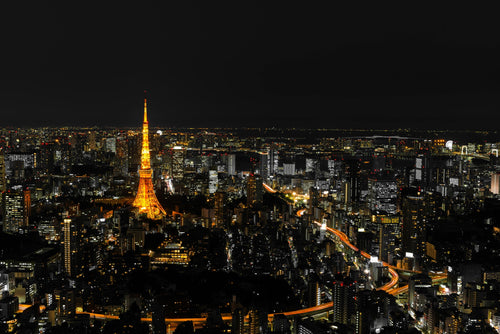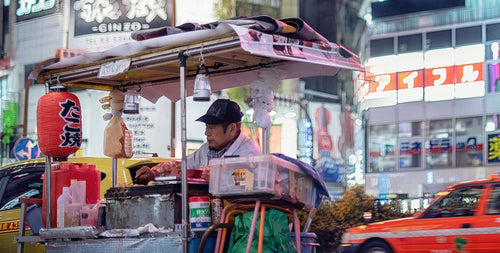
Hiking Guide to Mount Takao in Tokyo
Mount Takao, located just outside Tokyo, is one of the most accessible and popular hiking destinations in Japan. Known for its beautiful trails, stunning viewpoints, and rich cultural landmarks, Takao-san (as it’s locally known) offers a natural escape from the city with breathtaking views, especially during autumn and cherry blossom seasons. This guide will walk you through everything you need to know for a memorable hiking experience, from trail options and seasonal highlights to the cultural sites and amenities you can explore along the way.
1. About Mount Takao
Mount Takao, standing at 599 meters, is a nature-filled haven that combines outdoor adventure with traditional Japanese culture. Located in Hachioji, just an hour away from Tokyo, it attracts millions of visitors each year who come to enjoy its lush forests, diverse wildlife, and historical temples. Recognized as a Michelin three-star tourist attraction, Takao-san offers hikers a range of trails suited to different levels, as well as the opportunity to experience centuries-old cultural landmarks, such as the famous Yakuoin Temple.
2. Overview of Trails on Mount Takao
Mount Takao features seven well-maintained trails, each offering unique landscapes and challenges. These trails range from relatively easy paved paths to more challenging forested routes. Trail 1, the most popular path, is paved and accessible, making it suitable for beginners. Meanwhile, more seasoned hikers may prefer Trails 3 or 6, which are forested paths that offer a closer connection to nature. For those seeking a tranquil hike, the Inariyama Trail provides a more peaceful ascent with fewer crowds.
3. Highlights of Each Trail
Each trail on Mount Takao offers its own distinct attractions:
Trail 1 – Omotesando Trail
Best for beginners, Trail 1 is the main route leading to the summit and is mostly paved. Along the way, hikers can enjoy several cultural stops, including Yakuoin Temple, and various rest areas. Trail 1 is also known for its scenic spots, including views of Tokyo on clear days and seasonal foliage. Many visitors use the cable car or chair lift to reach midway up the mountain and start the hike from there.
Trail 3 – Katsura Woods Trail
This trail is ideal for nature lovers seeking a quieter, shaded path through Takao’s dense forest. Trail 3 offers scenic spots filled with towering Katsura trees and lush vegetation. Known for its serene environment, it’s a moderately easy hike that offers a close connection with the natural surroundings, making it a good choice for those who want a peaceful escape.
Trail 4 – Suspension Bridge Trail
Trail 4 is a short but scenic route known for its suspension bridge, which offers a unique view of the mountain’s forests. This trail is a bit steeper and is perfect for those looking to add a bit of adventure to their hike without committing to a longer route. The suspension bridge adds an exciting touch and offers unique photo opportunities.
Trail 6 – Biwa Waterfall Trail
Trail 6 is a more natural path that follows a stream and passes by Biwa Waterfall, a site where ascetic monks practice ritual purification. Known for its peaceful and rugged beauty, this trail is slightly more challenging due to its uneven terrain and natural landscape. It’s an excellent choice for hikers looking for an immersive experience in nature and an opportunity to see one of Mount Takao’s hidden spiritual sites.
Inariyama Trail
The Inariyama Trail is a quieter, less crowded path that offers a peaceful and scenic ascent along the ridgeline. With slightly more challenging terrain, this trail is perfect for experienced hikers seeking tranquility. Hikers on the Inariyama Trail are rewarded with panoramic views and a peaceful setting away from the more popular routes.
4. Cultural Sites and Scenic Spots
Mount Takao isn’t just about hiking; it’s also rich in cultural and historical sites that provide insights into Japan’s spiritual traditions. Highlights include:
Yakuoin Temple
Established over 1,200 years ago, Yakuoin Temple is a significant spiritual site dedicated to the deity Izuna Daigongen. Located near the top of Trail 1, the temple is known for its intricate statues, beautiful architecture, and spiritual atmosphere. Many visitors stop at the temple to pray for safety, health, and good fortune, making it an essential stop on a hike up Mount Takao.
Monkey Park & Wildflower Garden
Along Trail 1, visitors can stop by the Monkey Park, which is home to a variety of monkey species, and the adjacent Wildflower Garden, which showcases a beautiful array of native plants and flowers. Both attractions offer a chance to learn about the mountain’s ecology and wildlife, and they provide a family-friendly addition to the hiking experience.
Takao 599 Museum
Located near the base of the mountain, the Takao 599 Museum offers an in-depth look at the mountain’s biodiversity, flora, and fauna. This museum is free to enter and provides interesting exhibits that explain Mount Takao’s unique ecosystem. It’s a great stop before or after a hike for those interested in learning more about the area’s natural environment.
5. Best Times to Visit
Mount Takao is a year-round destination, but certain seasons bring out unique beauty and experiences:
Spring
Spring is cherry blossom season, with sakura trees blooming around mid-April. The mountain’s trails are lined with cherry blossoms, creating a picturesque setting that draws visitors from all over. This is one of the most popular times to visit Mount Takao, so expect larger crowds during weekends.
Autumn
Autumn is perhaps the best time for scenic views, as the mountain is covered in vibrant red, orange, and yellow leaves. From late October to mid-November, visitors can enjoy breathtaking foliage along the trails and at the summit. This season is ideal for photographers and nature enthusiasts who want to capture the beauty of Japanese autumn.
Winter
Winter offers clear views of Mount Fuji, especially on crisp, cloudless days. While it’s colder, winter is a great time for visitors seeking a peaceful hike without the crowds. The trails remain open and accessible, and the serene, snow-dusted landscape provides a unique, tranquil atmosphere.
6. Getting to Mount Takao
Mount Takao is easily accessible from central Tokyo, making it a convenient day-trip destination for both locals and tourists. The Keio Line from Shinjuku Station offers a direct route to Takaosanguchi Station, the starting point for the mountain’s trails. The journey takes about 50 minutes, and trains run frequently throughout the day. Once you arrive, it’s just a short walk to the base of Mount Takao, where you’ll find the cable car and chair lift options for those who prefer a quicker ascent to mid-mountain.
7. Essential Tips for Hiking Mount Takao
To make the most of your visit to Mount Takao, keep these practical tips in mind:
1. Wear Comfortable Clothing and Footwear
While some trails are paved, others can be rugged and uneven. Choose comfortable, weather-appropriate clothing and sturdy footwear for the best experience.
2. Bring Snacks and Water
There are several food stalls along Trail 1, but bringing your own water and light snacks is recommended, especially if you plan on taking one of the less-traveled trails.
3. Plan for Crowds
Mount Takao is a popular destination, especially on weekends and during peak seasons. Consider visiting on a weekday or arriving early in the morning for a quieter hike.
4. Respect Cultural Sites
Yakuoin Temple and other cultural sites along the trails are places of worship. Be mindful of temple etiquette, such as bowing before entering and maintaining a respectful silence.
Mount Takao offers a unique blend of natural beauty, cultural significance, and easy accessibility, making it one of Tokyo’s must-visit destinations for outdoor enthusiasts. Whether you’re a seasoned hiker or just looking for a peaceful day out of the city, Takao’s trails provide an experience that is as enriching as it is refreshing. With this guide, you’ll be ready to explore one of Japan’s most cherished mountains and create memories that capture the essence of Tokyo’s outdoor wonders.
Share
You may also like
-

Visiting Japan’s Love Hotel Districts: What to Expect
Japan’s love hotel districts are famous for their unique and fascinating blend of privacy, creativity, and a touch of...
-

Top 10 Late-Night Dining Spots in Tokyo’s 24-Hour Cafes
Tokyo’s vibrant nightlife extends well beyond bars and nightclubs, with a thriving late-night dining culture tha...
-

Best Night Tours in Tokyo for After-Dark Adventures
Tokyo’s nightlife is renowned for its energy, vibrancy, and unique blend of traditional and modern experiences. From ...
-

Japan’s Late-Night Food Culture: 8 Best Street Eats
Japan’s late-night food culture is a vibrant experience, especially in bustling cities like Tokyo and Osaka, where de...
There are currently no related posts.




